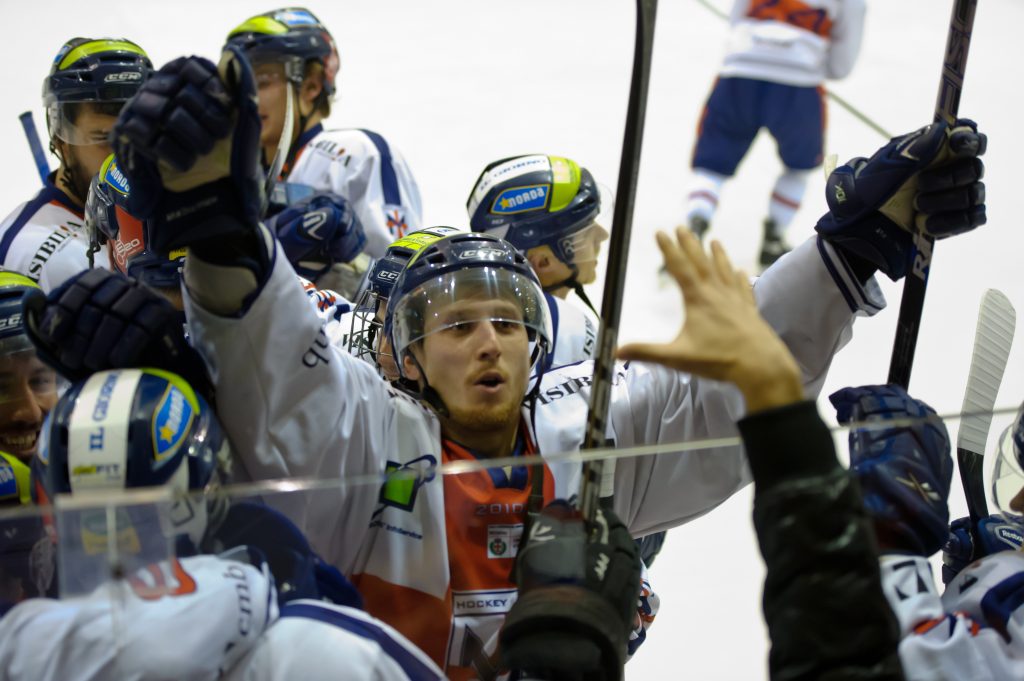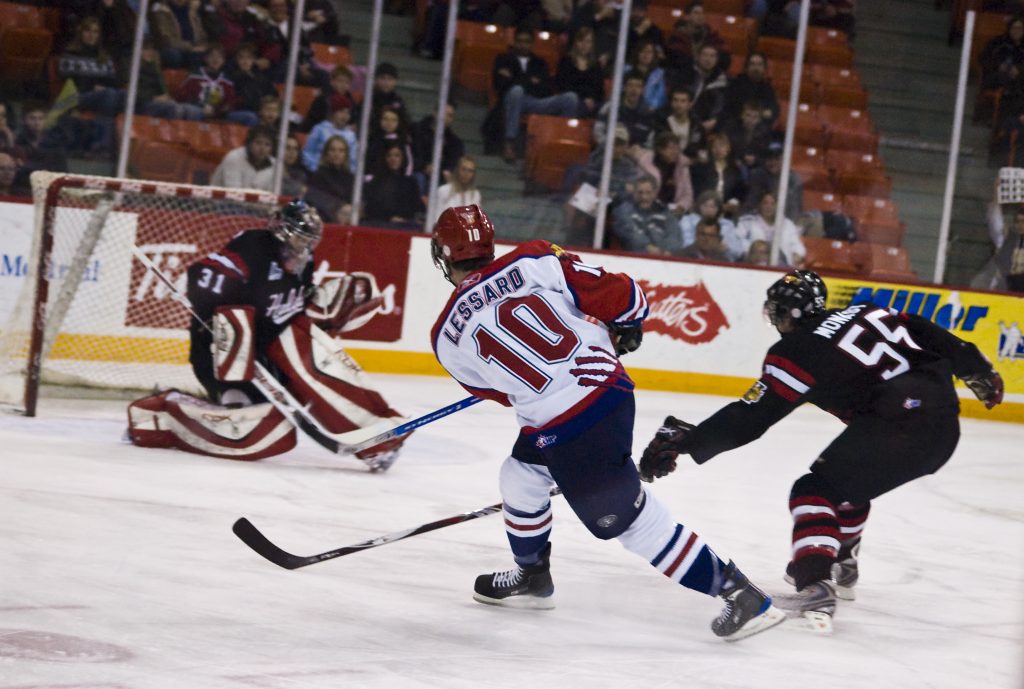What happens when a hockey game is tied after regulation time? Let’s take a look at the thrilling and intense world of hockey overtime rules.
Overtime in hockey can be one of the most exciting moments in the game, as both teams battle it out for the winning goal. However, there are specific rules in place that govern how overtime is played and how a winner is ultimately determined.
In this article, we will provide a comprehensive guide to the rules of overtime in hockey, including how it’s played, what happens if there is no winner, and how these rules can impact the game. Whether you’re a seasoned fan or a new player, understanding the rules of overtime can enhance your appreciation and enjoyment of this thrilling aspect of the game.
Table of Contents
- 1 NHL Overtime Rules 2022-2023
- 2 NHL Overtime Rules for Preseason and Regular Season
- 3 NHL Overtime Rules for Playoff Games
- 4 College Hockey Overtime Rules
- 5 What Happens if No Team Scores in Overtime?
- 6 Longest NHL Playoff Games
- 7 Which 2023 Playoff Games Have Gone into Overtime?
- 8 Pros and Cons of Overtime in Hockey
- 9 Conclusion
- 10 FAQ
NHL Overtime Rules 2022-2023
The NHL has updated its overtime rules for the 2022-23 season, with the aim of increasing scoring opportunities and decreasing the number of games that end in a shootout. These changes include longer overtime periods, different lineup requirements, and stricter penalties for delay of game. Here is a list of the updated NHL overtime rules for the 2022-23 season:
- Overtime will be 7 minutes long instead of the previous 5 minutes.
- The teams will play 3-on-3 during the overtime period.
- The team that scores a goal during overtime will be declared the winner.
- If no team scores during overtime, a shootout will be used to determine the winner.
- Teams will only be allowed one timeout during the game, including overtime.
- If a team fails to put a skater on the ice within 15 seconds of the end of a commercial break or after a power play or penalty kill, a delay of game penalty will be assessed.
The updated NHL overtime rules for the 2022-23 season are designed to make the game more exciting and reduce the number of games that end in a shootout. With longer overtime periods and stricter penalties, teams will have more opportunities to score and win in regulation time. These changes are sure to bring a new level of excitement and strategy to the game, and fans can look forward to seeing them in action in the upcoming season.

While playoff hockey overtime rules allow for unlimited sudden-death periods until the team scores and wins, the NHL Shootout Rules come into play during the regular season to determine a winner if the game remains tied after overtime. Therefore, understanding the playoff hockey overtime rules helps fans appreciate the fundamental difference in determining a winner between the regular season and playoffs.
NHL Overtime Rules for Preseason and Regular Season
The NHL has different rules for overtime during the preseason and regular season, with some variations in gameplay and determining a winner. In this article, we will provide a comprehensive guide to the NHL overtime rules for both preseason and regular season games, including differences in length, lineup requirements, and how a winner is determined. Understanding these rules can help fans and players alike better appreciate and enjoy the thrilling moments of overtime in the NHL.
Here is a list of the NHL overtime rules for preseason and regular season games:
- Preseason games have a five-minute sudden-death overtime period.
- Regular season games have a five-minute sudden-death overtime period followed by a shootout if no winner is determined.
- During overtime, teams play 3-on-3 instead of the traditional 5-on-5.
- Teams must have at least one defenseman and two forwards on the ice during overtime.
- If a team receives a penalty during overtime, the opposing team gets a power play with 4-on-3 players on the ice.
- If the game is still tied after the overtime period and shootout, the game is recorded as a tie for preseason games. Regular season games count as an overtime loss for the losing team and an overtime win for the winning team.
The NHL overtime rules for preseason and regular season games differ slightly in terms of length and determining a winner. While preseason games only have a sudden-death overtime period, regular season games have a shootout if no winner is determined in the overtime period. With 3-on-3 gameplay and lineup requirements, overtime in the NHL can be a thrilling and strategic moment in any game.
NHL Overtime Rules for Playoff Games
The NHL playoff games have their own set of rules for overtime, as the stakes are higher and the games are more intense. In this article, we will provide a comprehensive guide to the NHL overtime rules for playoff games, including differences in gameplay and determining a winner. Understanding these rules can help fans and players alike better appreciate and enjoy the thrilling moments of overtime in the NHL playoffs.
Here is a list of the NHL overtime rules for playoff hockey overtime rules:
- Playoff games have a 20-minute sudden-death overtime period.
- During overtime, teams play 5-on-5 instead of 3-on-3.
- Teams can make line changes during overtime, but they must be made on the fly.
- The first team to score a goal during overtime is declared the winner.
- If no winner is determined during the first overtime period, subsequent overtime periods will continue until a winner is declared.
- Teams must have at least one defenseman and two forwards on the ice during overtime.
- If a team receives a penalty during overtime, the opposing team gets a power play with 4-on-3 players on the ice.
The NHL overtime rules for playoff games are designed to ensure that a winner is declared in a timely manner, while also allowing for continued gameplay and strategic decision-making. With longer periods of play and lineup flexibility, overtime in the NHL playoffs can be some of the most thrilling moments in sports. Fans and players alike can appreciate the intensity and excitement of these high-stakes games.
College Hockey Overtime Rules
College hockey also has its own set of rules for overtime, which differ from the rules in the NHL. In this article, we will provide a comprehensive guide to the college hockey overtime rules, including how overtime is played and how a winner is determined. Understanding these rules can help fans and players alike better appreciate and enjoy the thrilling moments of overtime in college hockey.
Here is a list of the college hockey overtime rules:
- Overtime in college hockey is played in 5-minute sudden-death periods.
- If the game remains tied after the first overtime period, subsequent overtime periods are played until a winner is determined.
- During overtime, teams play 5-on-5 instead of 3-on-3.
- Teams switch sides of the ice after each overtime period.
- If a team receives a penalty during overtime, the opposing team gets a power play with 4-on-3 players on the ice.
- In the NCAA tournament, a shootout is used to determine the winner if the game remains tied after the second overtime period.
- If a team scores a goal during overtime, they are declared the winner.
The college hockey overtime rules are designed to ensure that a winner is determined in a timely manner, while also allowing for continued gameplay and strategic decision-making. With sudden-death periods and lineup flexibility, overtime in college hockey can be some of the most thrilling moments in sports. Fans and players alike can appreciate the intensity and excitement of these high-stakes games.
What Happens if No Team Scores in Overtime?
If no team scores during overtime in an NHL game, the game goes into a shootout, which is a series of penalty shots taken by players from both teams. If one team scores more goals than the other during the shootout, they are declared the winner of the game. However, if both teams score an equal number of goals in the shootout, the game is recorded as a tie for preseason games, while for regular season games, the game still goes down as an overtime loss for the losing team and an overtime win for the winning team.

Longest NHL Playoff Games
The NHL playoffs have produced some of the most intense and memorable moments in hockey history, with some games lasting well beyond regulation time. So, we will take a look at the longest NHL playoff games in history, including the number of periods played and the final score. These games are a testament to the skill and perseverance of the players, and the excitement and drama that can be found in the sport of hockey.
Here is a list of the longest NHL playoff games and how many overtimes in hockey were played:
- Detroit Red Wings vs. Montreal Maroons – March 24, 1936 (6 OT) – Red Wings won 1-0.
- Toronto Maple Leafs vs. Boston Bruins – April 3, 1933 (6 OT) – Maple Leafs won 1-0.
- Philadelphia Flyers vs. Pittsburgh Penguins – May 4, 2000 (5 OT) – Flyers won 2-1.
- Anaheim Ducks vs. Dallas Stars – April 11, 2003 (5 OT) – Ducks won 4-3.
- Detroit Red Wings vs. New York Islanders – April 18, 1987 (4 OT) – Islanders won 3-2.
The longest NHL playoff games in history are a testament to the skill and determination of the players, as well as the excitement and drama of the sport of hockey. These games have created some of the most memorable moments in hockey history and are a testament to the intensity and competitiveness of playoff hockey. While the length of these games may be grueling for the players, they are a testament to the passion and dedication of those who play and love the sport of hockey.
Which 2023 Playoff Games Have Gone into Overtime?
The NHL playoffs are always an exciting time for hockey fans, with intense matchups and thrilling finishes. Overtime games are particularly memorable, as players battle it out on the ice in sudden-death scenarios. Here is a table of the 2023 NHL playoff games that have gone into overtime:
| Date | Teams | Score | Overtime Winner |
|---|---|---|---|
| April 17 | Wild vs. Stars | Wild 3, Stars 2 | Wild |
| April 17 | Kings vs. Oilers | Kings 4, Oilers 3 | Kings |
| April 19 | Hurricanes vs. Islanders | Hurricanes 4, Islanders 3 | Hurricanes |
| April 21 | Kings vs. Oilers | Kings 3, Oilers 2 | Kings |
| April 22 | Golden Knights vs. Jets | Golden Knights 5, Jets 4 | Golden Knights |
| April 22 | Maple Leafs vs. Lightning | Maple Leafs 4, Lightning 3 | Maple Leafs |
| April 22 | Devils vs. Rangers | Devils 2, Rangers 1 | Devils |
| April 23 | Oilers vs. Kings | Oilers 5, Kings 4 | Oilers |
| April 24 | Maple Leafs vs. Lightning | Maple Leafs 5, Lightning 4 | Maple Leafs |
| April 24 | Kraken vs. Avalanche | Kraken 3, Avalanche 2 | Kraken |
| April 26 | Panthers vs. Bruins | Panthers 4, Bruins 3 | Panthers |
| April 28 | Hurricanes vs. Islanders | Hurricanes 2, Islanders 1 | Hurricanes |
| April 29 | Maple Leafs vs. Lightning | Maple Leafs 2, Lightning 1 | Maple Leafs |
The 2023 NHL playoffs have already provided us with plenty of thrilling overtime games, and there will no doubt be more to come. These games are a testament to the skill and determination of the players, as well as the excitement and drama of the sport of hockey. Fans can look forward to more exciting moments as the playoffs continue.
Pros and Cons of Overtime in Hockey
Overtime in hockey can be both exciting and nerve-wracking for players and fans alike. While it provides an opportunity for teams to win in sudden-death scenarios, it also has its drawbacks. Here are some pros and cons of overtime in hockey:
Pros:
- Intense and exciting gameplay
- Provides an opportunity for teams to win in sudden-death scenarios
- This can lead to memorable moments and plays
- Keeps fans engaged and invested in the game
Cons:
- Increases risk of injury for players
- This can lead to fatigue and exhaustion, impacting the quality of play
- May not accurately determine the better team, as luck can play a factor
- Prolonged games can lead to scheduling issues and fatigue for fans
Over time hockey has both positive and negative aspects. While it can be thrilling to watch and provides an opportunity for teams to win in sudden-death scenarios, it also has the potential to negatively impact players and fans. Ultimately, the pros and cons of overtime in hockey depend on individual perspectives and priorities.
Conclusion
The rules of overtime in hockey vary depending on the league or tournament. While overtime can be exciting for players and fans, it also has its drawbacks such as increased risk of injury and fatigue. Ultimately, the rules of overtime aim to determine a clear winner and provide an entertaining and fair conclusion to the game.
FAQ
How long is OT in Hockey?
Is there Overtime in Hockey?
Yes, overtime is a standard component of hockey games. In the NHL and many other hockey leagues, if a game is tied at the end of regulation, an overtime period is played to determine a winner. The purpose of overtime is to provide an opportunity for teams to break the tie and secure a decisive outcome. Overtime periods typically involve modified rules, such as 3-on-3 or 5-on-5 play, to create more open ice and scoring opportunities. If no team scores during the designated overtime period, the game may proceed to a shootout to determine the winner.
Is Hockey a Golden Goal in Overtime?
Can a Hockey Game End in a Tie?
What is the Longest Overtime in Hockey?
Get your daily dose of sports news and updates with our dedicated website athletesite.com, catering to the interests of boxing, fitness, golf, hockey, MMA, and tennis enthusiasts. From championship highlights to fitness tips, expert golf analysis to hockey team updates, and interviews with MMA fighters to in-depth tennis coverage, our site offers a wealth of information and entertainment.

I’m Heorhii Rysak, a go-to sports enthusiast and blogger. My fascination with sports began in my childhood with karate, setting the foundation for my love of physical fitness. Over the years, I’ve delved into various disciplines, including martial arts and CrossFit, and developed a passion for tennis. I bring a wealth of practical experience to my blog, where I share equipment reviews, workout plans, and fitness advice. My goal is simple: to inspire and assist you in your journey toward better health and performance.